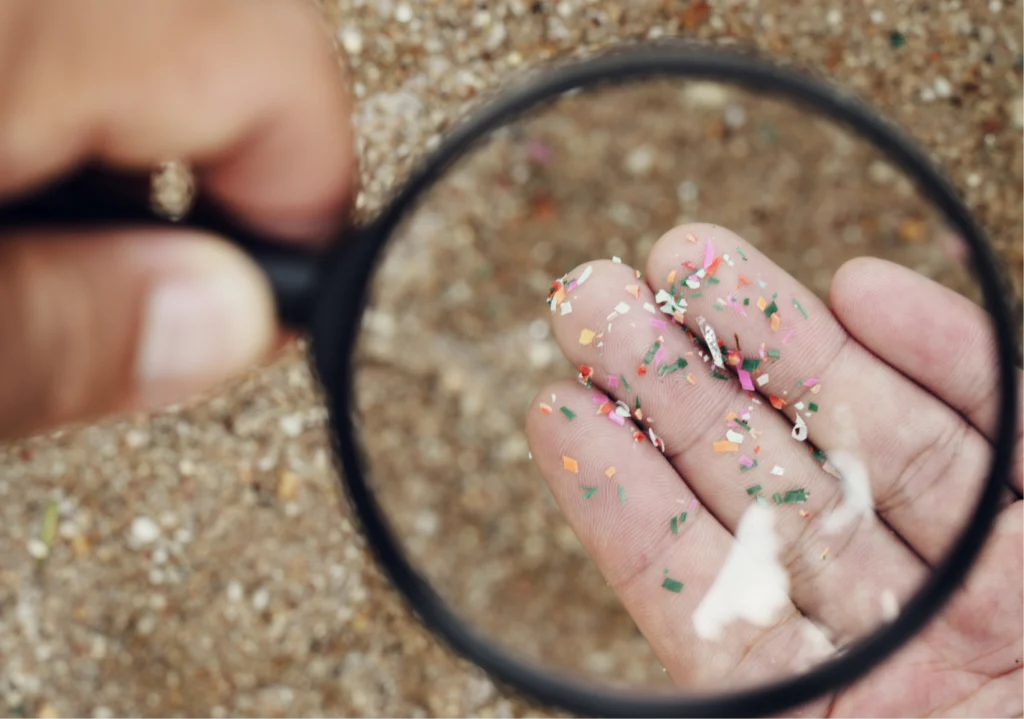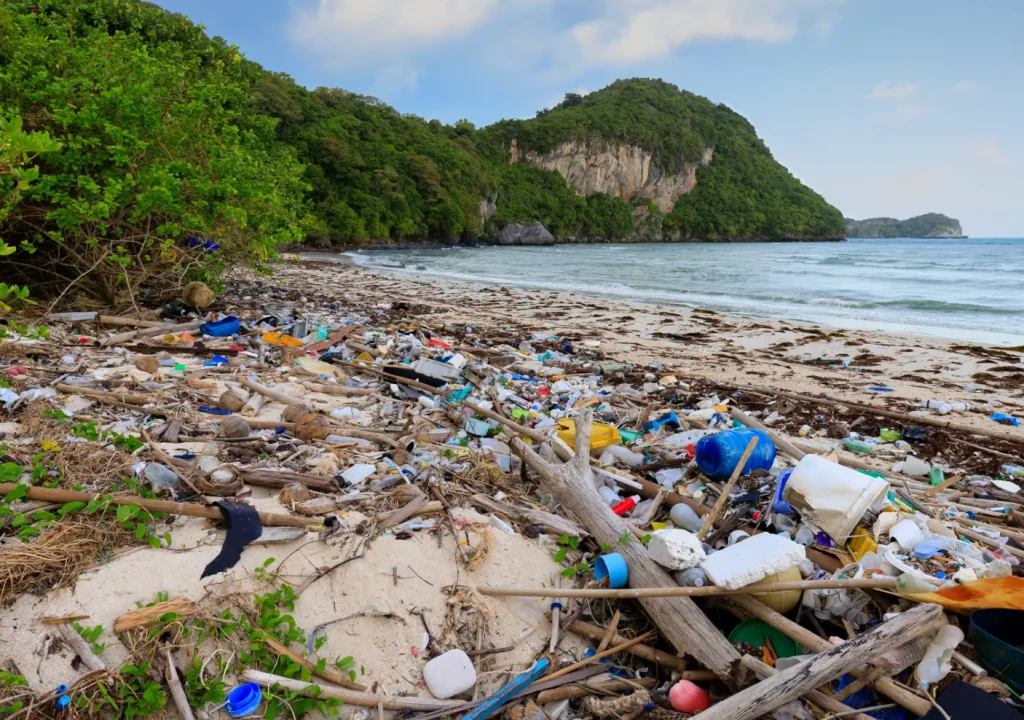I hope you are enjoying your summer. I can’t believe that August is upon us.
This issue of the Newsletter is about Microplastics. These very small plastic particles less than 5mm in size (1), have been found in our bodies including blood, urine, gastrointestinal tracts, hearts, lungs, and placentas, and have been shown to negatively impact our health.
They are in the the air we breathe, the food we eat, and the water (even unbottled!) we drink, the cosmetics we use, as well as in our oceans, land, and wildlife.
The World Wildlife Fund says that we ingest about 5 GRAMS of microplastics per week—the equivalent of eating a plastic credit card! (2) However, this has been challenged recently. (3)

New research shows that we are consuming even smaller plastic particles called “Nanoplastics” that can affect our bodies. One study found that are about 250,000 nanoparticles in one liter of bottled water! (4)
Microplastics are made of chemicals you may have heard of such as pthalates, Bisphenyl A (BPA), and PFAS.
They can be absorbed, ingested, or inhaled into the human body through the skin, gastrointestinal system, or lungs.(5)
The ramifications of exposure to microplastics is large. They are disrupting our metabolism, fertility, cardiovascular function, endocrine function, and our microbiome, and may increase cancer especially of the gastrointestinal tract. (6)

Sources of Microplastics:
In addition to baby bottles, coffee cups, water bottles, microwave popcorn bags, and even non-latex condoms, there have been SEVEN GROUPS of microplastics found in our marine environment.(7)
They are:
- Synthetic textiles
- Vehicle tire
- Road markings
- Personal care products and cosmetics
- Plastic pellets
- Marine coatings
- City dust.
And to make matters worse, according to the Environmental Protection Agency (EPA) there are more than 86,000 chemicals registered in the US that have been in commerce.(8) MOST are NOT REGULATED!
—————————
How to Lower Your Risk of Microplastic Exposure:
The New York Times had an excellent article about this with excellent recommendations. (9) Some of them are included here.
1. Follow the Don’t Mess with Stress™(10) protocol–healthy diet, quality sleep, stress reduction, exercise. to build physiologic resilience.
2. Keep your home/work environment air clean from dust, which can contain microplastics. Use air filters and Hepa or S-class vacuums.
3. Limit exposure to canned foods, plastic coffee cups, plastic containers, plastic bottled water, especially single use plastic containers.
4. Don’t microwave in plastic containers
5. Avoid plastic cutting boards. Use bamboo or wood cutting boards.
6. Don’t wash plastic containers in the dishwasher. Wash by hand.
7. Use water filters at home and work.
8. Avoid plastics in personal care products--check out the Environmental Working Group for suggestions. https://www.ewg.org/areas-focus/toxic-chemicals
I know this Newsletter may be a bit disturbing. But there are ways to limit your use of plastics which can ultimately help your health and our beautiful planet.
For an optimistic view of the situation, check out Macropanic over Nanoplastics?
If you are interested in reading the latest international report on the “State of the Science on Plastic Chemicals”, click on this link: PlastChem Project
To Your Health,
Dr. Jill
—————————————
Past Newsletters:
Please feel free to read my past Newsletters on my blog Dr. Jill Baron Newsletters and Blog which has helpful tips for you to feel good and optimize your health.
Feel Free to Forward to a Friend:
If a friend has forwarded you this email, I invite you to receive my Newsletter by clicking on the link Dr. Jill Newsletter Sign Up. After filling out the form, you will receive a Stress Management Guide gift in your inbox!
——————————————
Please click on the book image to purchase on Amazon!
A Great Gift for Health!
Disclaimer: Please note that the content on this Newsletter does not constitute medical advice. Please consult with a physician before making any medical, nutritional, or lifestyle changes recommended in this Newsletter.
References:
6. https://www.ucsf.edu/news/2024/02/427161/how-to-limit-microplastics-dangers
7. https://portals.iucn.org/library/sites/library/files/documents/2017-002-En.pdf
8. https://www.epa.gov/tsca-inventory/about-tsca-chemical-substance-inventory
9. https://www.nytimes.com/wirecutter/reviews/how-to-avoid-eating-microplastics
10. Baron, Jill R. Don’t Mess with Stress™–A Simple Guide to Managing Stress, Optimizing Health, and Making the World a Better Place. Nov. 2020.

